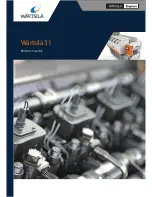
78
Storage and Transporting
Storage Preparation
Proper storage preparation is essential for keeping your engine trouble free and looking good. The following
steps will help to keep rust and corrosion from impairing your engine’s function and appearance. and will make
the engine easier to start after storage.
Cleaning
If the engine has been running, allow it to cool for at least half an hour before cleaning.
Clean all exterior surfaces, touch up any damaged paint, and coat other areas that may rust with a light fi lm of oil.
Fuel
Gasoline will oxidize and deteriorate in storage. Old gasoline will cause hard starting, and it leaves gum deposits
that clog the fuel system. If the gasoline in your engine deteriorates during storage, you may need to the carbu-
retor and other fuel system components serviced or replaced.
The length of time that gasoline can be left in your fuel tank and carburetor without causing functional problems
will vary with such factors as gasoline blend. your Storage temperatures, and whether the fuel tank is partially
or completely fi lled. The air in a partially fi lled fuel tank promotes fuel deterioration oration. Very warm storage/
temperatures accelerate fuel lerioration. Fuel deterioration problem& may occur within weeks, or even less if the
gasoline was not fresh when you fi lled the fuel tank.
The Distributor’s Limited Warranty does not cover fuel system damage or engine performance problems resul-
ting from neglected storage preparation.
Draining the Fuel Tank and Carburetor
1.
Place approved gasoline container below the carburetor, and use a funnel to avoid spilling fuel.
2.
Remove the carburetor drain bolt and sediment cup, and then move the fuel valve lever to the ON position.
FIGURE 11.14
WASHER
WASHER
DRAIN BOLT
DRAIN BOLT
SEDIMENT CUP
SEDIMENT CUP
FUEL VALVE LEVER
FUEL VALVE LEVER
O-RING
O-RING
3.
After all the fuel has drain into the container, reinstall the drain bolt and sediment cup. Tighten them secu-
rely.







































